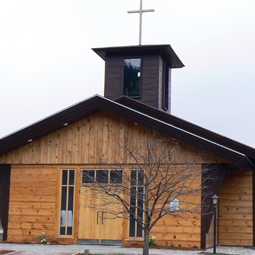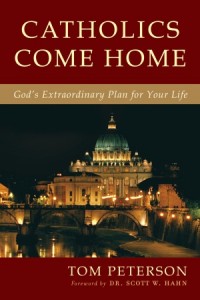Michigan’s Silent Night Chapel
Learn the Catholic history of the beloved Christmas carol.

The notes floated on the air, one by one, in a soothing, gentle cadence. Almost instantly, I recognized the tune: Silent Night, one of the world’s most beloved Christmas carols.
The carol was being played on a guitar and was coming from somewhere on the grounds at Bronner’s CHRISTmas Wonderland in Frankenmuth, Mich.
Bronner’s, founded in 1945, bills itself as the world’s largest Christmas store, with more than 50,000 gifts and trims. What caught my eye on the way in when I visited in July was how founder Wally Bronner has written his store’s name to honor God: Bronner’s CHRISTmas Wonderland. Similarly, the store’s motto, prominently featured on the side of the building, reads: "Enjoy CHRISTmas, It’s HIS Birthday; Enjoy Life, It’s HIS Way."
I was about to enter the massive store when an employee pointed out the chapel across the parking lot. Intrigued, I walked over and discovered the Silent Night Memorial Chapel. Stepping inside its cool interior, I quickly learned the history of the Silent Night song and chapel.
It was 1816 when Father Josef Mohr, an Austrian Catholic priest, wrote the poem Silent Night. Two years later, then curate at St. Nicholas Church in Oberndorf, Austria, Father Mohr approached the parish organist and asked him to set his poem to music. The organist, Franz Xaver Gruber, agreed, and Silent Night was born. Gruber wrote the song to be performed by two voices accompanied by guitar when the church organ broke, so that’s how it was played at its debut at St. Nicholas’ midnight Mass on Christmas Eve 1818. Gruber and Father Mohr did the singing.
The song spread quickly throughout Europe and allegedly came to America in 1839, when some accounts say it was first performed in front of Wall Street’s Trinity Church, an Episcopal congregation. In 1914, it helped inspire World War I’s famous Christmas Truce. The unofficial truce, largely between German and British soldiers, began on Christmas Eve, when both sides put down their arms and began singing Christmas hymns. Silent Night — Stille Nacht in German — was one of the few carols both sides knew.
Back in Oberndorf, St. Nicholas Church had been damaged by the perennially high waters of the adjacent Salzach River, which flows down from the Alpine Mountains. So, in 1906, it was rebuilt on higher ground. In 1937, to commemorate the now-famous Christmas carol’s origin, a Silent Night Memorial Chapel was constructed over the spot where the original St. Nicholas Church’s altar had been set.
Wally Bronner traveled to Oberndorf in 1976 and visited the chapel, later securing permission to build an exact replica in Frankenmuth.
Although the chapel stretches 56 feet toward heaven, it’s small inside. A short visitor walkway takes you past the replicated chancel, protected by a glass panel. The chancel contains an altar topped with a copy of the hand-crocheted altar cloth found in the Oberndorf chapel, an 1818 hand-carved crucifix and a few pews. A framed copy of a biblical account of the Nativity is attached to one wall, while information about the hymn and composers and a reproduction of the original music score is on another. A large Advent wreath, star and crown hang from the ceiling.
While in the walkway, I studied photos of the chapel’s 1992 construction, then read the message of Christ’s birth (Luke 2:1-19), presented in 30 languages. Back outside, I learned that Silent Night was translated into more than 300 languages and dialects. White plaques set along a winding, lamppost-lined path leading to the chapel display the verses in various languages, one to three verses each. I marveled at how one simple hymn became so beloved that it’s sung in every imaginable tongue, including ones I’ve never heard of.
With the strains of Silent Night floating peacefully around me, I quietly stepped into the life-size Nativity scene on the chapel grounds and headed toward Baby Jesus, who was displayed along with the Three Kings and a humble shepherd, who had a lamb slung across his shoulders.
Being part of the chapel’s Nativity scene while hearing Silent Night strummed on a guitar is all it takes to realize the power and overwhelming beauty of this song.
What a perfect addition to the world’s largest CHRISTmas store — and a fitting reminder of the true meaning of Christmas all year.
Melanie Radzicki McManus writes from Sun Prairie, Wisconsin.
If You Go
Bronner’s and the Silent Night Memorial Chapel are open daily, except on New Year’s Day, Easter, Thanksgiving and Christmas Day. Every Christmas Eve, from 3-3:15pm, a Bronner family member and guitarist lead visitors in singing Silent Night.
- Keywords:
- Dec. 15-28, 2013

















